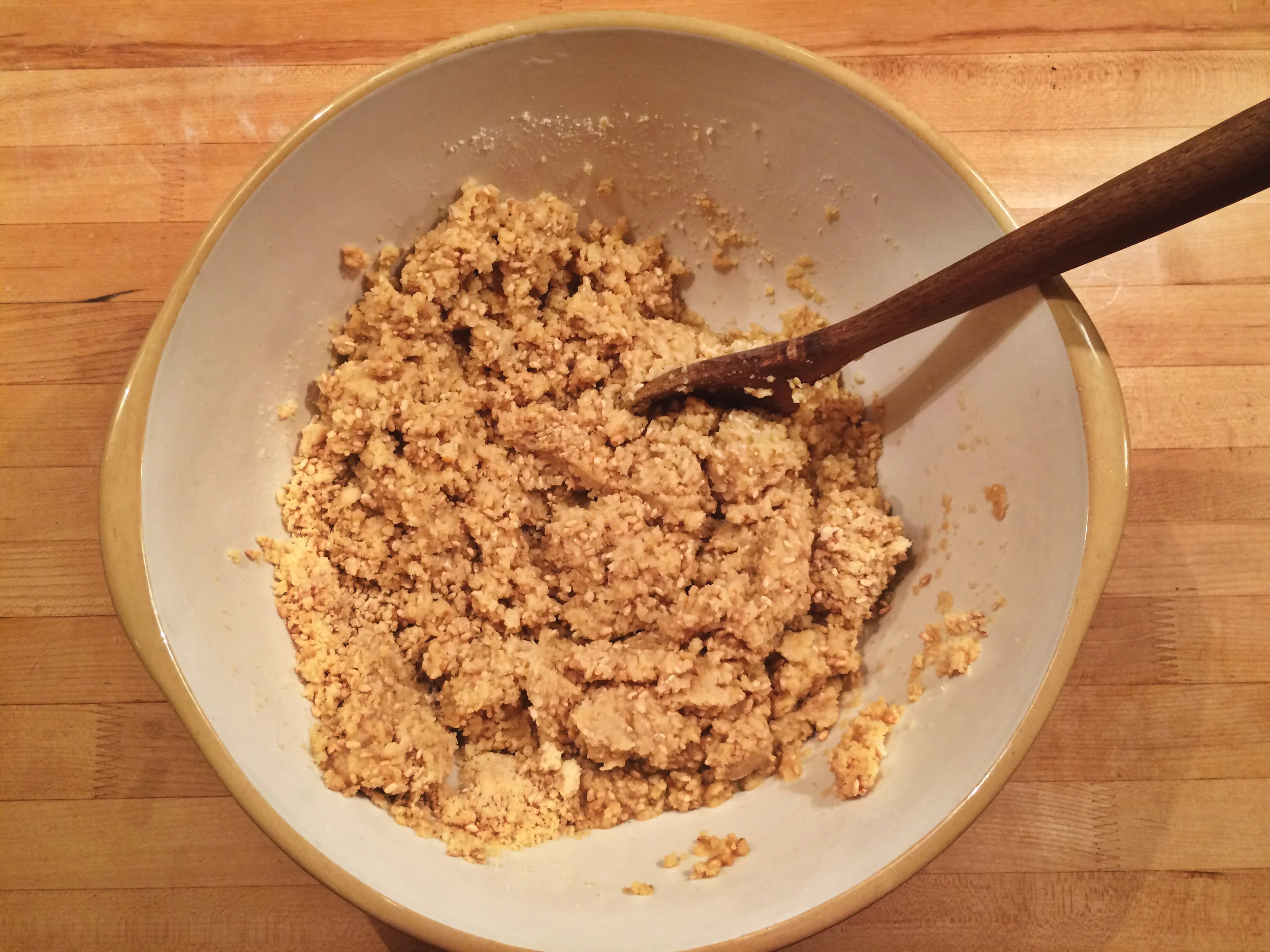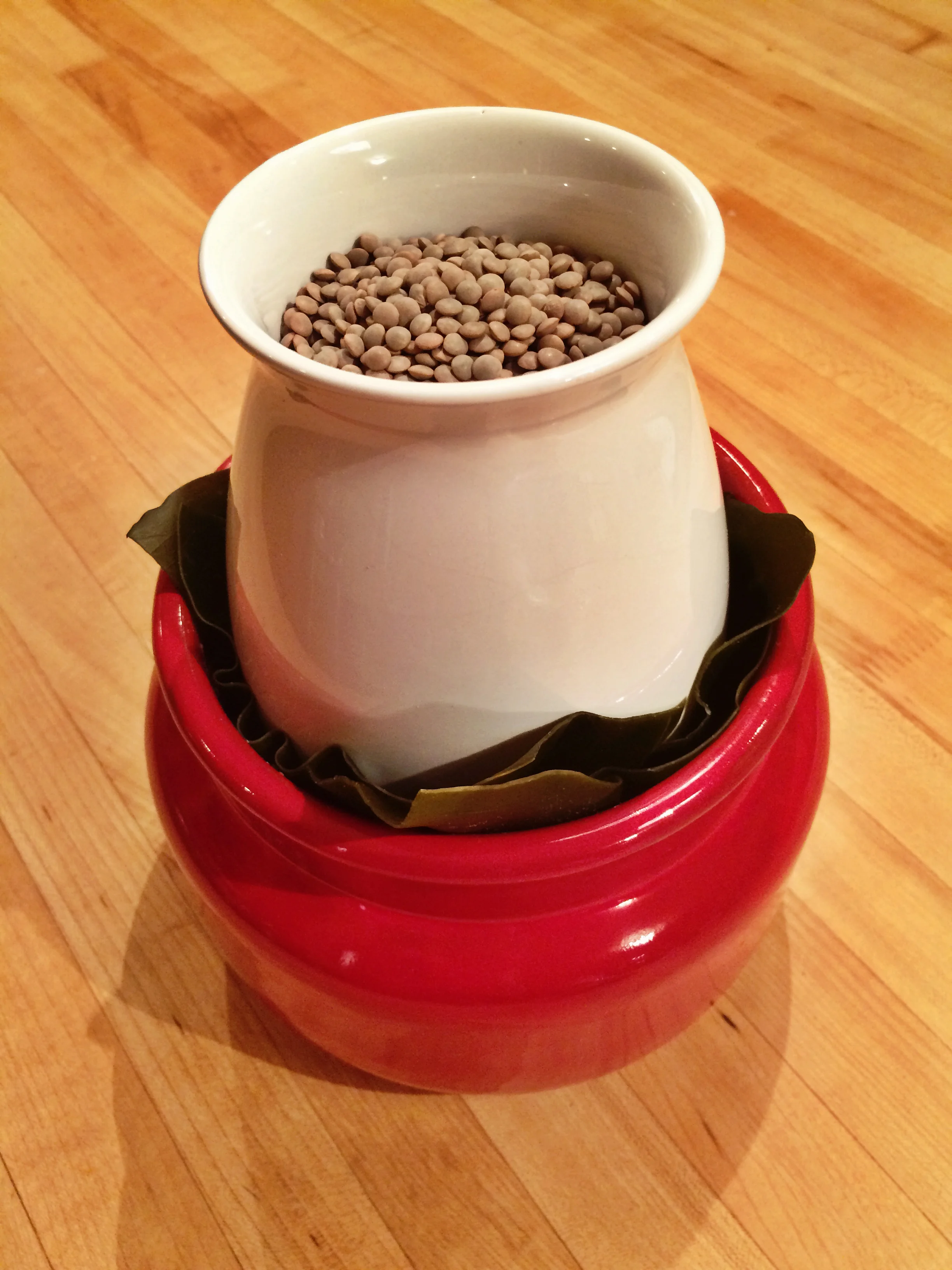Chickpea Miso
This recipe is an experiment for me - I have done a lot of research and reading about how to make miso, but this is my first attempt. Miso is simple to make, but can take a long time to ferment, depending on how deep and flavourful you want it to be. Typically miso is fermented for about 6 months, though if you want a sweeter miso it can be ready in as little as 1 month. If you want a stronger miso you can leave it for 2 or more years! The longer you leave it the more the fermenting bacteria can do its work, resulting in a deeper, earthier flavour and higher concentration of probiotics.
I like to use miso in salad dressings, primarily, or in a sauce poured over steamed greens or roasted root vegetables (mix it with vinegar, honey, and oil). It also makes a delicious and simple broth when mixed with hot water, which is very nourishing when you are sick, and the hit of probiotics is good for your immune system (but don’t boil it because this kills the beneficial bacteria, and affects the flavour). The fermentation process gives miso an umami element in its flavour profile, a rich taste we typically associate with foods such as cheese, meat, nutritional yeast, and MSG (umami is the fifth flavour, beyond sweet/sour/salty/bitter). Miso is traditionally made with soybeans, but chickpea miso has a delicious and unique flavour (and is a good option if you can’t eat soy).
As with any fermented food you need a starter culture. Miso requires koji, which is brown rice innoculated with the bacteria Aspergillus oryzae. I bought mine from a store in Calgary called the Light Cellar, but koji is also readily available to order online. You will also need a half gallon size crock pot to ferment the miso in. A glass jar or other un-reactive material food-safe is fine, but I do not recommend plastic or metal. The crock should have a wide mouth so it is easier to pack and cover (see below).
Recipe (and raw materials):
2.5c dried chickpeas
1/2c sea salt
1.5 T miso (pre-made/store bought/borrowed from a friend)
2.5c koji
1/2 gallon (2.5L) crock or glass container with wide mouth
cheesecloth or clean towel
heavy weight (a clean, flat, non-metal object that fits into the mouth of your crock)
Instructions:
Soak dried chickpeas over night. Cook chickpeas over the stovetop until soft, then strain, reserving the cooking liquid for later.
Combine koji and salt, set aside.
Blend chickpeas to desired consistency. I made mine a little bit chunky, but a very smooth miso is also nice. Add the tablespoon of pre-made miso and mix.
When chickpeas are cool enough to handle (less than about 120F), add in the koji/salt mixture and enough of the reserved cooking liquid to create the consistency of shaggy dough.
Wet the insides of your crock or jar, sprinkle with a generous amount of salt, close lid and shake to coat all sides. Pack miso into crock as tightly as possible. Spread a generous layer of salt over top, and place the weight on top.
After a few days there should be a layer of liquid above the miso. If not add some water (boil it first to make sure it is clean, but then cool it before adding it to the miso so you don’t kill the fermenting bacteria). You can see in my photo below that I used a type of seaweed called kombu to layer over top, which is part of the traditional miso making process. This ended up getting pretty messy every time I checked my miso, so I don’t think it is necessary. You can cover the whole crock and weight with cheesecloth, or just leave it open to the air.
Store your miso in a clean environment and a cool dark place. The top surface that is exposed to air will grow a layer of mould, which is fine and part of the process, just as long as it isn't black mould. This is an indication something has gone terribly wrong and your miso is not safe for consumption. The earlier stage of the fermentation is the most vulnerable because there is less lactic acid bacteria present, but once the fermentation begins there is less chance of spoiling.
When you are ready to use it, scrape approximately 1/2” off the top layer to get rid of any mould. The liquid can be strained off and used like soy sauce - this is actually tamari, which is a common condiment very similar to soy sauce.
This recipe will make LOTS of miso, and once it is finished fermenting you can transfer it to smaller jar to keep in the fridge, where the cool temperatures will stall the fermentation process and allow it to last for a very long time. Or perhaps give some away to friends!
Health benefits of miso:
Health claims about miso range from radiant skin to preventing cancer and aging. I have been hard pressed to find any specific research on miso paste, except for this study which found that miso given to rats suppressed tumour growth. Also, they gave the rats an equivalent amount of NaCl, delivered either as miso or as table salt, and found that the miso-fed rats did not have the increased blood pressure the table salt rats experienced (and in fact had blood pressures similar to rats on a reduced sodium diet). However. Rat studies can be interesting but certainly not conclusive. In general, I choose to eat miso because it is delicious, of course, but also because it is a living food that contains probiotics, and I consider this to be an essential part of a healthy diet.
Disclaimer: Information can be empowering, but we all have unique health profiles and needs. Health-related information contained in this post is intended to be general in nature and should not be used as a substitute for a visit with a Naturopathic Doctor. The advice is intended to offer only a general basis for individuals to discuss their medical condition with their health care provider. Always consult your licensed Naturopathic Physician, or visit the Boucher Naturopathic Medical Clinic for individual care.



